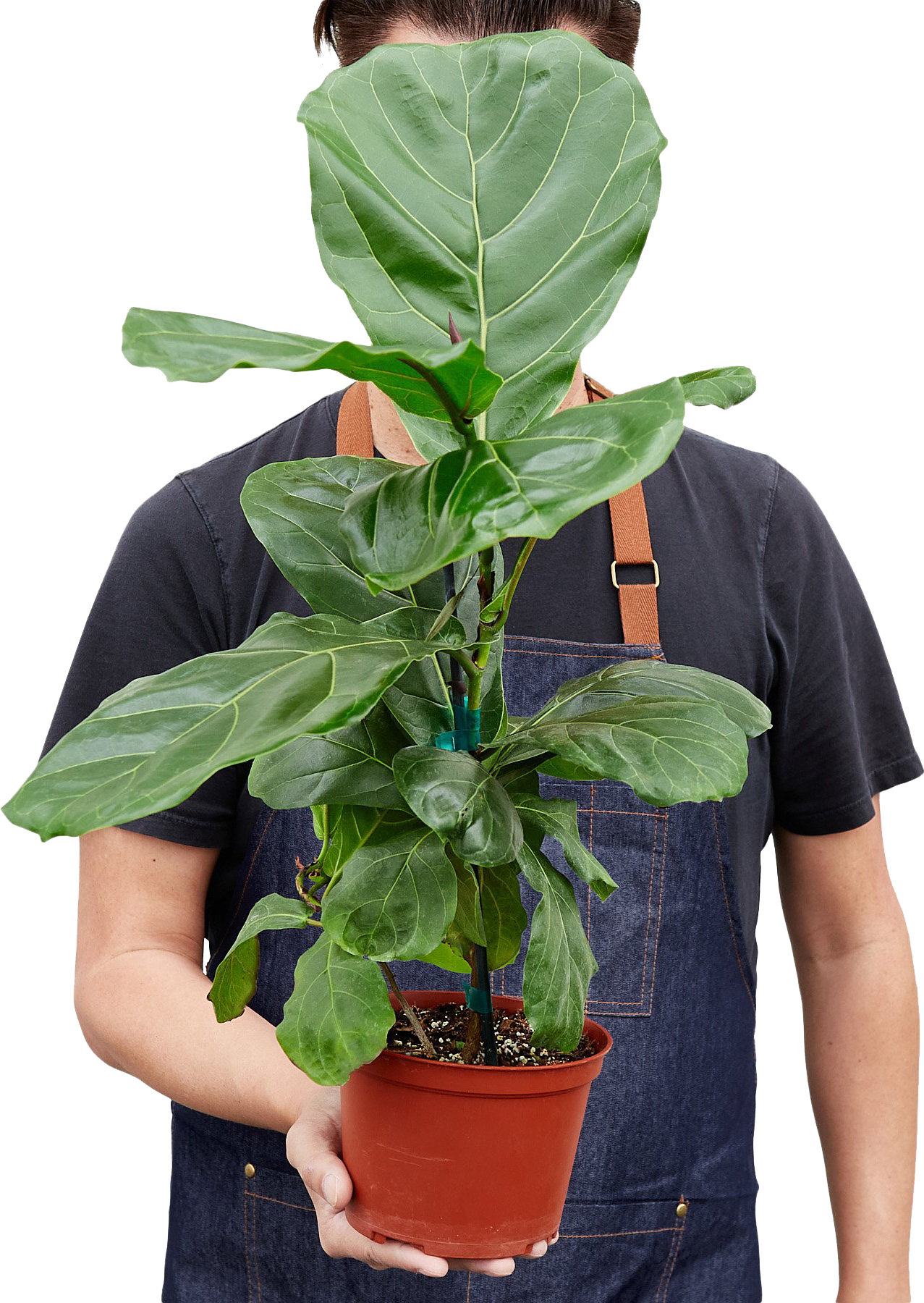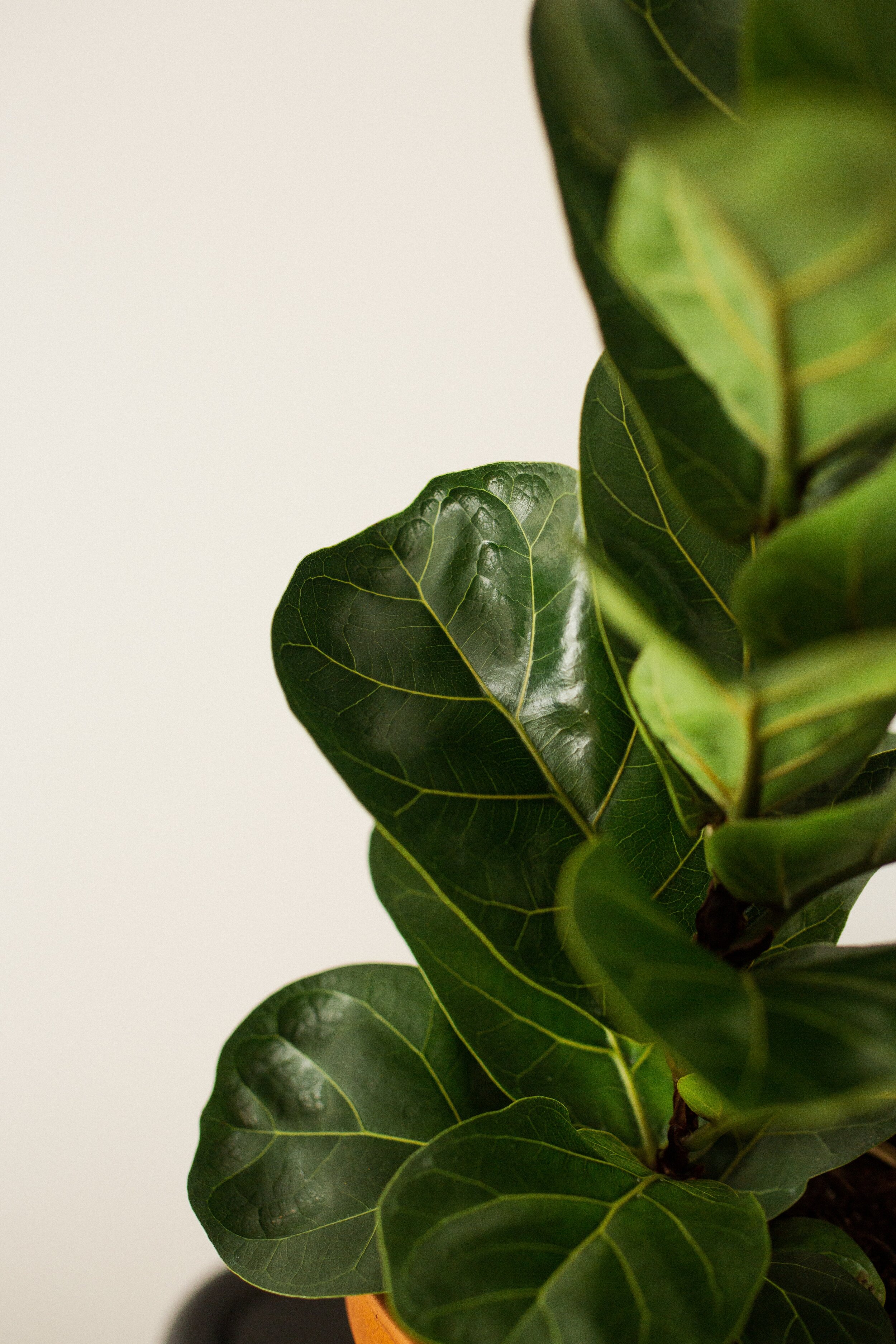 Image 1 of 6
Image 1 of 6

 Image 2 of 6
Image 2 of 6

 Image 3 of 6
Image 3 of 6

 Image 4 of 6
Image 4 of 6

 Image 5 of 6
Image 5 of 6

 Image 6 of 6
Image 6 of 6







Ficus Lyrata 'Fiddle Leaf Fig'
Botanical Name: Ficus lyrata
Common Name(s): Fiddle-leaf Fig
Native to tropical western Africa, Ficus lyrata, commonly known as the fiddle-leaf fig, has stunnignly large green leaves with a leather-like texture, and an even larger following of houseplant fans. Although Ficus Lyrata grows naturally in lowland tropical forests it can thrive in a large range of environments. Place in bright indirect sunlight, on the ground where it can grow up to 6' tall. Despite its popularity, it's certainly not the easiest houseplant to look after, but its visual impact in a space is unmatched when given proper conditions and care.
NATIVE LAND: Tropic West Africa
WATER: Keep soil moist. Water thoroughly when the top 2” of soil have dried. Allowing the soil to dry deep to the lower root system will lead to leaf loss, so be sure to check in with the soil regularly until you develop a routine with your plant. In contrast, too much moisture in the soil can lead to root rot, also causing leaves to fall off.
LIGHT: Bright, but indirect sunlight. Choose a spot away from air vents and drafts, where he/ she can soak up plenty of bright ambient light. Directly in front of, or close by a southern or western facing window is ideal, and eastern exposure can also work as long as the plant is directly in the window and the space feels very bright. He/ she will absolutely appreciate a few hours of direct sun is also beneficial. If placed in a full-sun location (where the plant will receive over 6 hours of direct light daily), added humidity will keep your Fiddle Leaf looking its best. We DO NOT recommend this plant for a northern sun-exposure window. It will not thrive in low light conditions.
ISSUES:
dropping leaves rapidly - under or overwatered, extreme temperature changes
leaves turning brown and crispy - root rot
BENEFITS: Highly efficient air purifying using its large deep green . Removes common toxins from the air.
PET/KID FRIENDLY: Mildly toxic to humans, toxic to animals
Botanical Name: Ficus lyrata
Common Name(s): Fiddle-leaf Fig
Native to tropical western Africa, Ficus lyrata, commonly known as the fiddle-leaf fig, has stunnignly large green leaves with a leather-like texture, and an even larger following of houseplant fans. Although Ficus Lyrata grows naturally in lowland tropical forests it can thrive in a large range of environments. Place in bright indirect sunlight, on the ground where it can grow up to 6' tall. Despite its popularity, it's certainly not the easiest houseplant to look after, but its visual impact in a space is unmatched when given proper conditions and care.
NATIVE LAND: Tropic West Africa
WATER: Keep soil moist. Water thoroughly when the top 2” of soil have dried. Allowing the soil to dry deep to the lower root system will lead to leaf loss, so be sure to check in with the soil regularly until you develop a routine with your plant. In contrast, too much moisture in the soil can lead to root rot, also causing leaves to fall off.
LIGHT: Bright, but indirect sunlight. Choose a spot away from air vents and drafts, where he/ she can soak up plenty of bright ambient light. Directly in front of, or close by a southern or western facing window is ideal, and eastern exposure can also work as long as the plant is directly in the window and the space feels very bright. He/ she will absolutely appreciate a few hours of direct sun is also beneficial. If placed in a full-sun location (where the plant will receive over 6 hours of direct light daily), added humidity will keep your Fiddle Leaf looking its best. We DO NOT recommend this plant for a northern sun-exposure window. It will not thrive in low light conditions.
ISSUES:
dropping leaves rapidly - under or overwatered, extreme temperature changes
leaves turning brown and crispy - root rot
BENEFITS: Highly efficient air purifying using its large deep green . Removes common toxins from the air.
PET/KID FRIENDLY: Mildly toxic to humans, toxic to animals
Botanical Name: Ficus lyrata
Common Name(s): Fiddle-leaf Fig
Native to tropical western Africa, Ficus lyrata, commonly known as the fiddle-leaf fig, has stunnignly large green leaves with a leather-like texture, and an even larger following of houseplant fans. Although Ficus Lyrata grows naturally in lowland tropical forests it can thrive in a large range of environments. Place in bright indirect sunlight, on the ground where it can grow up to 6' tall. Despite its popularity, it's certainly not the easiest houseplant to look after, but its visual impact in a space is unmatched when given proper conditions and care.
NATIVE LAND: Tropic West Africa
WATER: Keep soil moist. Water thoroughly when the top 2” of soil have dried. Allowing the soil to dry deep to the lower root system will lead to leaf loss, so be sure to check in with the soil regularly until you develop a routine with your plant. In contrast, too much moisture in the soil can lead to root rot, also causing leaves to fall off.
LIGHT: Bright, but indirect sunlight. Choose a spot away from air vents and drafts, where he/ she can soak up plenty of bright ambient light. Directly in front of, or close by a southern or western facing window is ideal, and eastern exposure can also work as long as the plant is directly in the window and the space feels very bright. He/ she will absolutely appreciate a few hours of direct sun is also beneficial. If placed in a full-sun location (where the plant will receive over 6 hours of direct light daily), added humidity will keep your Fiddle Leaf looking its best. We DO NOT recommend this plant for a northern sun-exposure window. It will not thrive in low light conditions.
ISSUES:
dropping leaves rapidly - under or overwatered, extreme temperature changes
leaves turning brown and crispy - root rot
BENEFITS: Highly efficient air purifying using its large deep green . Removes common toxins from the air.
PET/KID FRIENDLY: Mildly toxic to humans, toxic to animals
